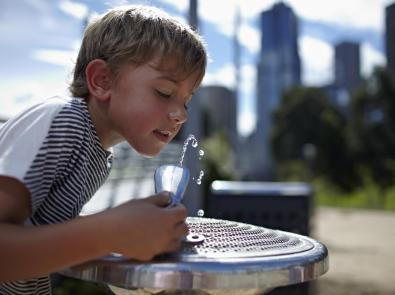A new technology is automatically sequencing pumping and water distribution across our infrastructure network, optimising for minimal pumping costs and maximal hydroelectricity generation. Read the case study to learn more.
Sustainable Development Goals:
Goal 7: Affordable and clean energy
Goal 9: Industry, innovation and infrastructure
Goal 13: Climate action
Background
The Melbourne water supply network is complex: with a total capacity of 1,812 billion litres stored across 10 reservoirs and 37 service reservoirs, water is treated by 14 treatment plants and transported via 1,069 kilometres of water mains and 221 kilometres of aqueducts.
This drinking water ultimately reaches more than 5 million people and many industries spread over an area of approximately 10,000 square kilometres. As the water mainly runs downhill from the catchments, 14 turbines located in large pipes are used to generate electricity to reduce pumping and water treatment costs.
Melbourne Water has a target of halving our greenhouse gas emissions by 2025 and exploring a path to reduce them to net zero by 2030. To achieve this, many projects are being explored to reduce energy use, minimise greenhouse gas emissions by our wastewater treatment plants, and generate renewable energy.
Project focus
While most of the water in the system is transferred by gravity, there is still notable energy use in pumping and water treatment. This pumping is complex and costly, both financially and in terms of greenhouse gas emissions.
To reduce energy use, we are implementing a new technology called AquaAdvanced Energy. This technology will work together with our existing SCADA system to automatically sequence pumping and water distribution across the infrastructure network, between our water treatment plants and our supply points to the retail water companies.
The optimisation model within the software will help minimise pumping costs and maximise revenue generation by the hydroelectric turbines in the network. It will also reduce the risk of outages at our treatment plants, the use of chemicals as it smooths the variations in flow of water, and enable better management of outages when they occur.
Outcomes
The first phase of this rollout of new technology has taken place at the Winneke Water Treatment Plant–Preston Reservoir system. Future rollouts are planned for the Tarago–Cardinia system in early 2021 with the final stage planned for Silvan–Greenvale reservoirs in mid 2021.
You may also like...
Delivering on the Sustainable Development Goals
This report outlines Melbourne Water's unwavering commitment to advancing sustainability through the United Nations Sustainable Development Goals (SDGs).




